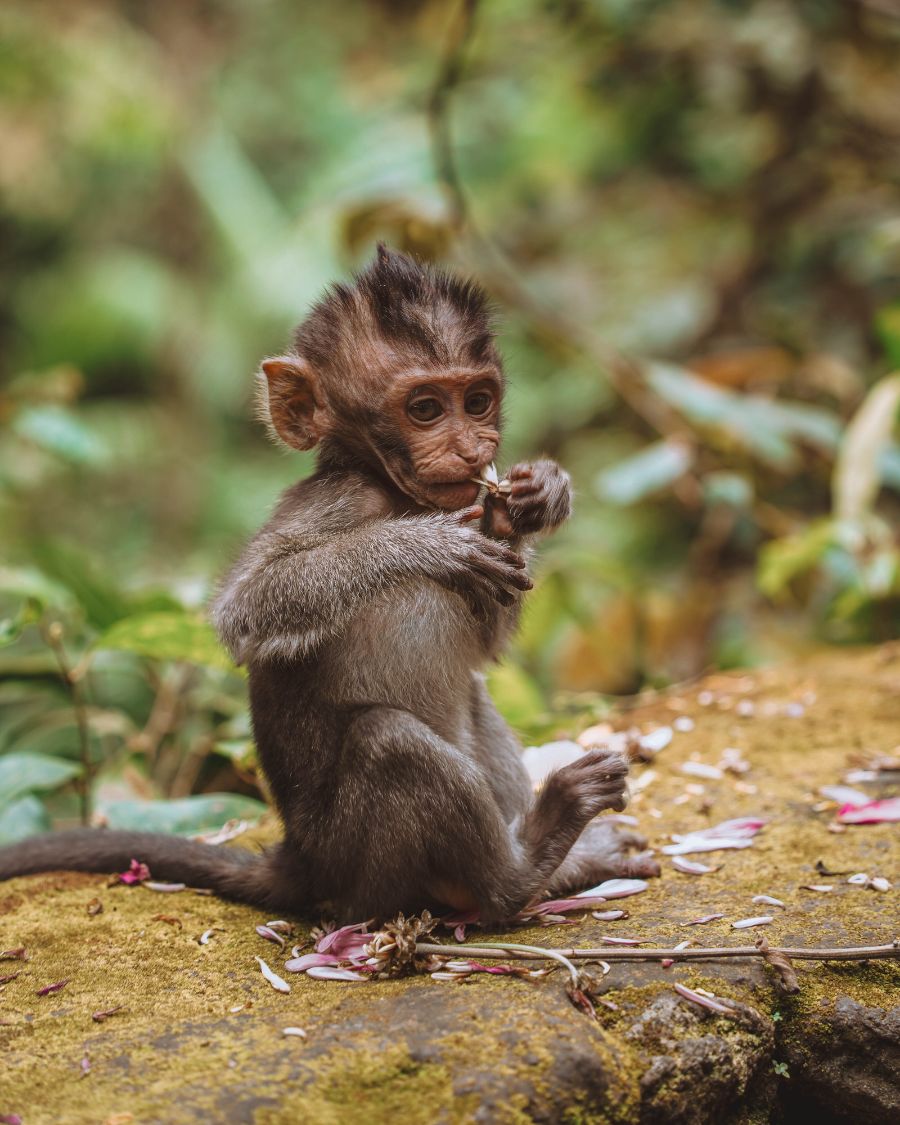
Is Monkey Forest in Ubud ethical? One of the most famous sites to visit in Ubud, Bali, Monkey Forest is famous for up-close-and-personal interactions with Bali’s cheeky long-tailed macaques. But, in a world where many wildlife encounters are unethical and exploitative, we need to carefully consider the places we visit. So, is visiting Monkey Forest in Ubud actually ethical? Or should it be avoided?
History of Monkey Forest, Ubud, Bali
Monkey forest in Ubud has existed for centuries. The ancient temples in the forest date back to the 14th century, and the monkeys were considered guardian spirits. Worshippers would give food to these furry temple guardians for good luck. Starting a centuries-old symbiotic relationship between the wild macaques and the humans living around them. In the Balinese tradition, the monkey has come to represent harmony between humans and nature.
The actual Sacred Monkey Forest Sanctuary itself (known colloquially as “Monkey Forest”) was established in the 1930s. Apparently around 50 monkeys were introduced to the area at the time. The population is now in excess of 600 monkeys. The money raised from entrance tickets goes towards conservation efforts and is also used to benefit the local community.
Are the Monkeys Wild in Monkey Forest
Yes, the monkeys in Monkey Forest, Ubud, are wild animals and are free to come and go as they choose. This makes Monkey Forest significantly more ethical to visit than a zoo.
Interaction Between the Sanctuary and the Monkeys
The sanctuary feeds the monkeys each day. The monkeys eat sweet potato, supplemented with fruits such as banana and papaya, and also coconut, papaya leaf, corn and cucumber. The health of the monkeys has apparently improved since this feeding regime was introduced, and since tourists were banned from feeding them (see below).
Interaction Between Visitors to Monkey Forest and the Monkeys
Visitors are not allowed to feed the monkeys. Feeding the monkeys inappropriate foods such as bread or biscuits can be dangerous for their health. Even giving them seemingly healthy foods such as bananas can be unhealthy for them. This also encourages the monkeys to be aggressive towards humans and harass people for food. Visitors are not meant to touch the monkeys as this can be stressful for them (and the monkeys may bite!).
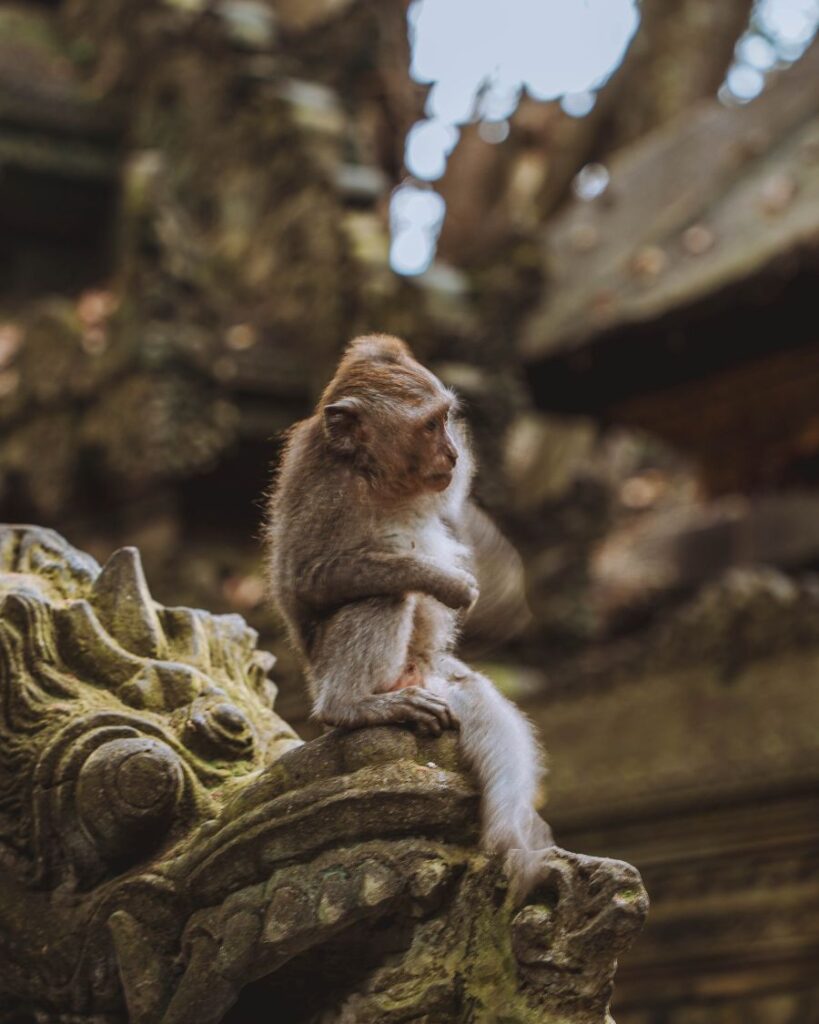
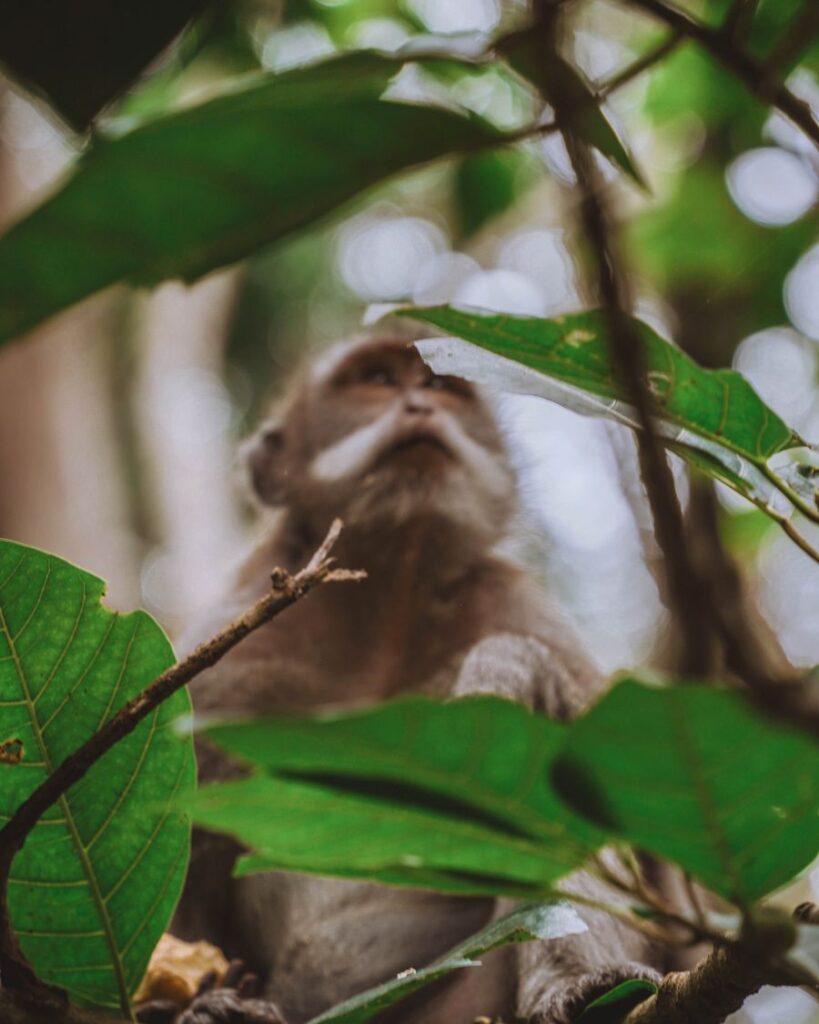
Relationship Between Monkey Forest and the Local Community
Monkey forest is 100% owned by the local village of Padangtegal. This means that 100% of the profits from ticket sales etc. remain in the local area. This is an important factor in determining whether a tourist attraction in ethical. In many instances, attractions may be foreign-owned and so the money is sucked out, leaving nothing to benefit the local community. However, in the case of Monkey Forest the money made directly benefits the locals.
Issues Facing Monkey Forest
The main concern facing Monkey Forest is the size of the macaque population. This has increased drastically since the sanctuary was opened. Now, the over-spill means that macaques are often seen on rooftops and up power lines in the local village. This is creating conflict between the residents and the monkeys. Macaques will sometimes go into people’s houses and businesses, and need to be chased out. This of course creates an increased risk of injury and disease transmission. This increase in population is causing stress to the mental health of the macaques. Their habitat is no longer large enough for them, which is leading to aggression.
So, is Monkey Forest in Ubud Ethical?
To consider whether a nature attraction is ethical, we can look at the definition of ecotourism given by The International Ecotourism Society (TIES). Ecotourism is described by TIES as “responsible travel to natural areas that conserves the environment, sustains the well-being of the local people, and involves interpretation and education” (TIES, 2015).
- The monkeys themselves are free to roam freely and are apparently healthy. They are not forced by the sanctuary to perform cruel tricks or kept in cages. The forest environment is cared for and some of the profits raised are reinvested into the natural environment. However, the sanctuary does need to consider how to manage the increasing population issue.
- We can see that Monkey Forest does sustain the well-being of the local people. It is community-owned, creates jobs in the local area and the profits remain in the community. Again, this will only continue to be the case if the macaque population is managed.
- It involves a degree of education as visitors can learn about the macaques and their behaviour, as well as the longstanding relationship between the macaques and the Balinese people. But it would be nice to see more focus on this.
As to whether visits to Monkey Forest can truly be called responsible does unfortunately depend largely on the behaviour of each individual visitor. A sanctuary / visitor power dynamic unfortunately all too common in developing nations that rely heavily on the tourist dollar.
The sanctuary itself has introduced stricter rules for guests in relation to feeding and touching the macaques. But these are unfortunately not always adhered to. I saw a lot of visitors trying to touch the monkeys, including trying to pick up a baby monkey. Deliberately handing phones to the macaques for “monkey selfies” also seems to be common on social media. It would be good to see stricter enforcement of these rules by staff members. Tourists are not always aware of the harm they are doing.
In a Nutshell…
On balance, I would argue that Monkey Forest in Ubud is does appear to be an ethical wildlife attraction? Or at least trying to be. It would be good to see them continuing to move in the right direction by clamping down on inappropriate human / monkey interactions such as touching and selfies etc. And it will be interesting to see how they continue to manage the monkey population in the future. There is potential here for Monkey Forest to become a leading example of how to do wildlife tourism in Bali right. But there is unfortunately equal potential for them to slide into being an exploitative venue if they continue to turn a blind eye to visitors who want unnatural interactions with the monkeys.
When wildlife attractions are successful in fulfilling the needs of (i) the wildlife, (ii) the local community and (iii) the visitor, then they are an effective way of promoting conservation. If wildlife provides an economic benefit to a local community this does empower the community to protect the wildlife.
So for now, I’d say go ahead and visit Monkey Forest. Just don’t feed or touch the monkeys!
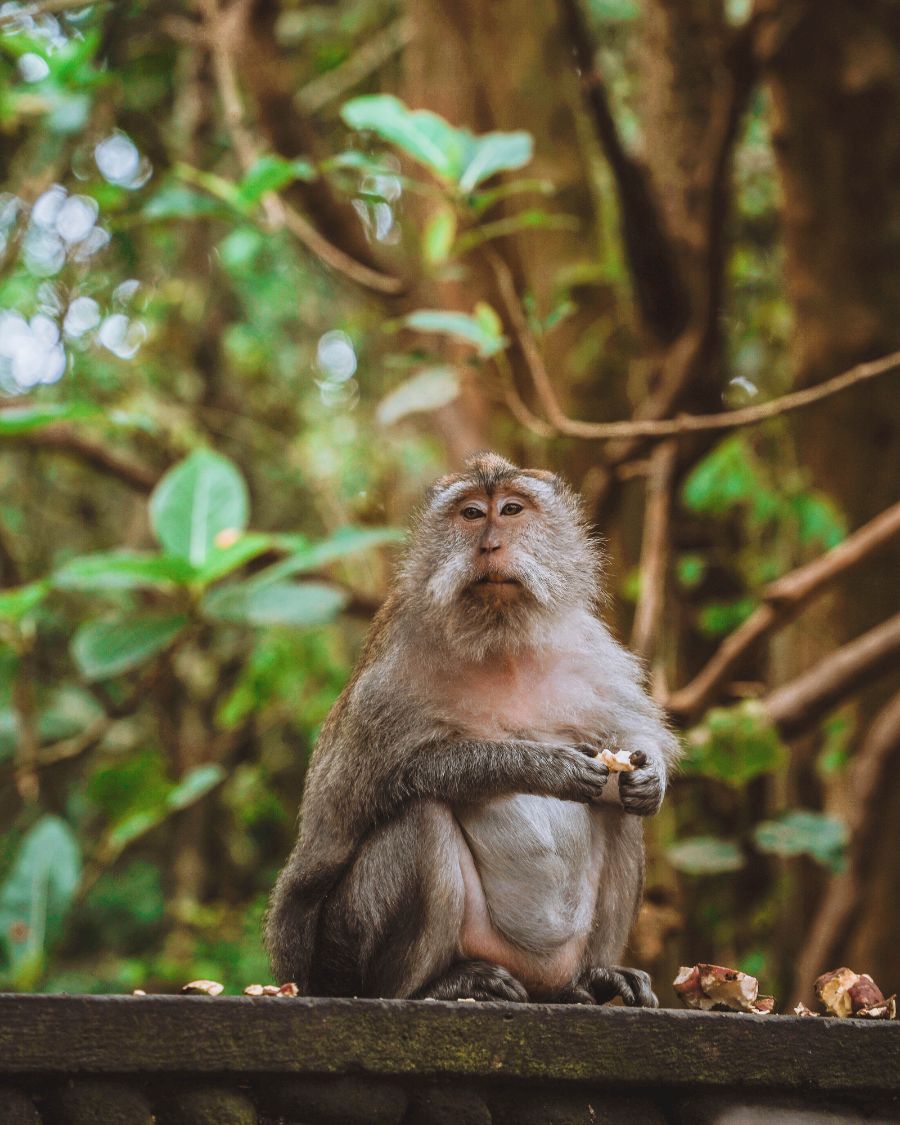
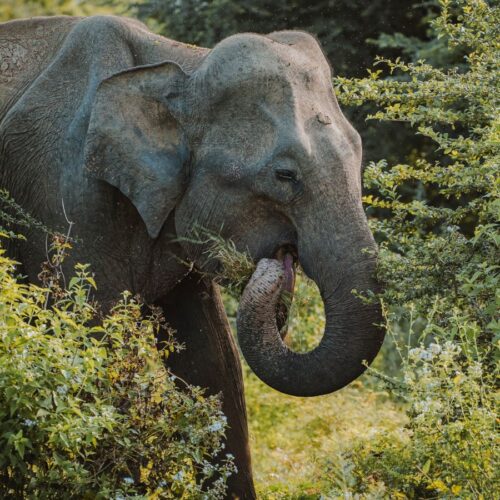
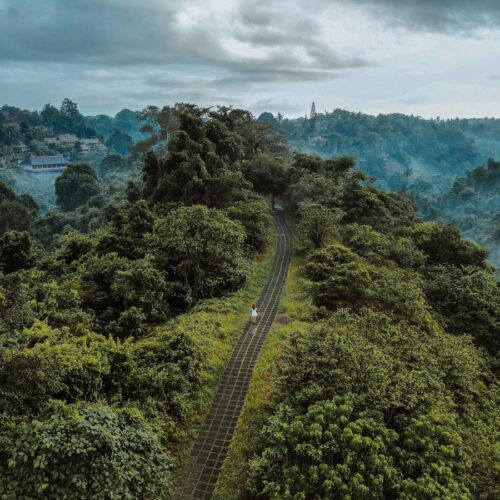
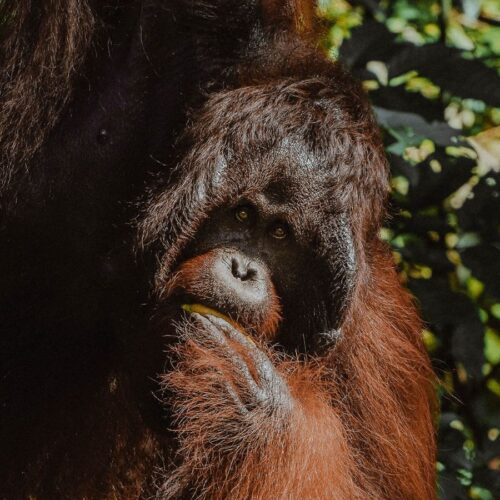

[…] Campuhan Ridge Walk is a beautiful walking track in the centre of Ubud, about 15 minutes walk from Monkey Forest. Best done either early in the morning or in the evening, the walk offers stunning views over the […]